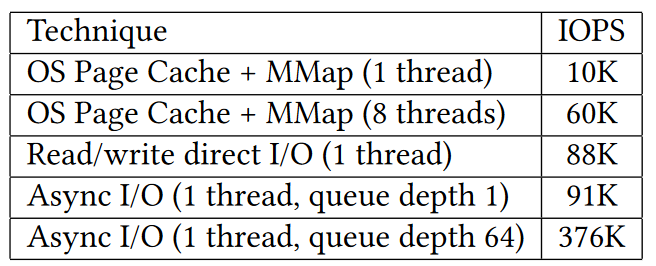
KVell [pdf] avoids to save indexes on disk to maximize the performance of the KV store.
There are two major index schemes for Key-Value stores:
Both schemes suffer from the CPU-bottleneck as the raw performance of NVMe SSDs increases rapidly. The CPU-bottleneck relays within the fact that keys need to keep sorted in both designs.
Workload: YCSB A 50% write – 50% read, uniform key distribution, 1KB KV-item size.
Indexes are stored in memory only. 1.7GB of RAM stores 100M items. No need to order keys on disk, thus no tail latency.
Worker threads are independent and maintain their own indexes. Synchronization is not required.
KVell uses the asynchronous I/O interface AIO. There are two AIO implementations in Linux:
AIO is most efficient compared to mmap and the direct I/O interface.

MMap is least efficient!
The overall performance of KVell is 2x faster for read-dominant workloads and 5x faster for write-dominant workloads.